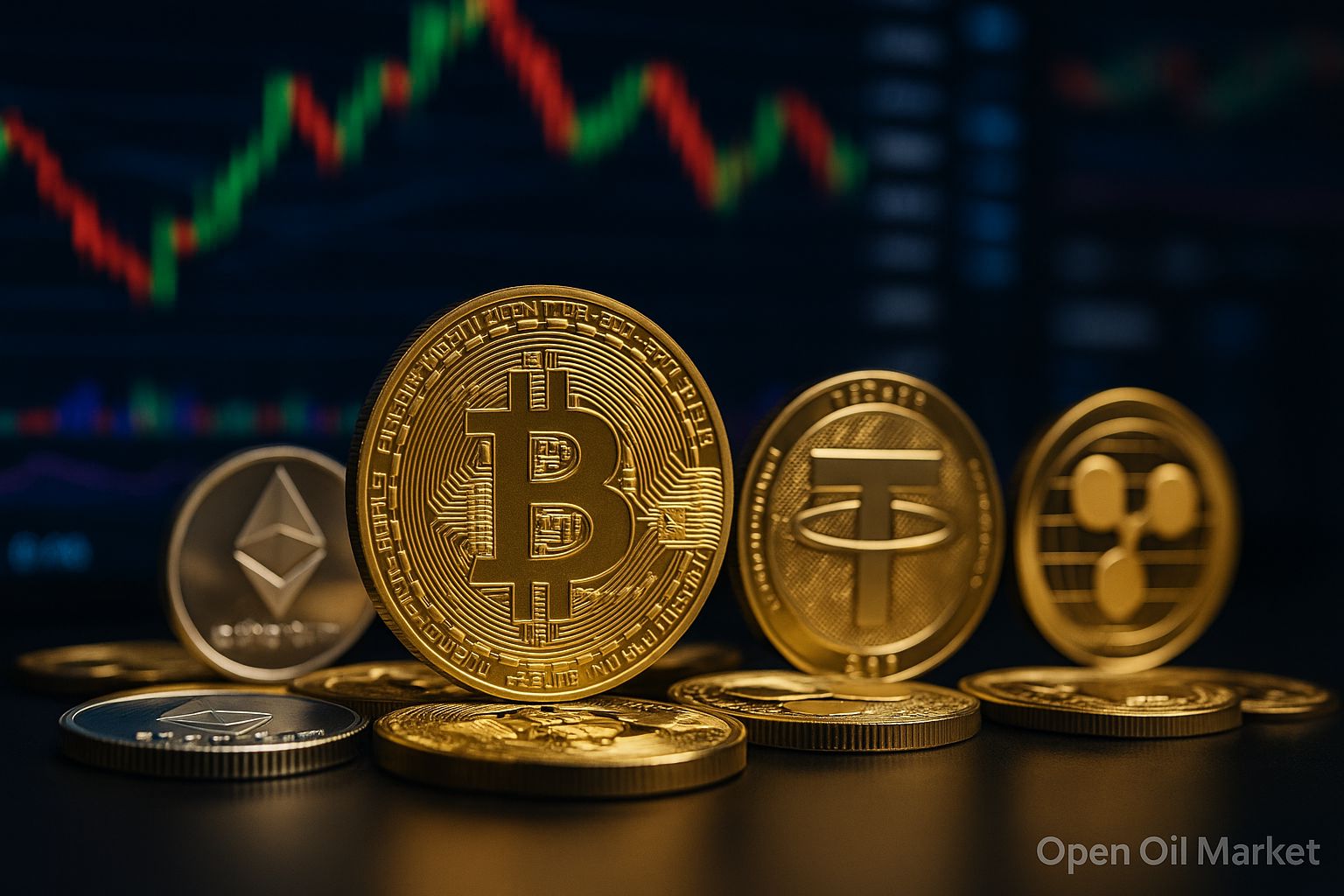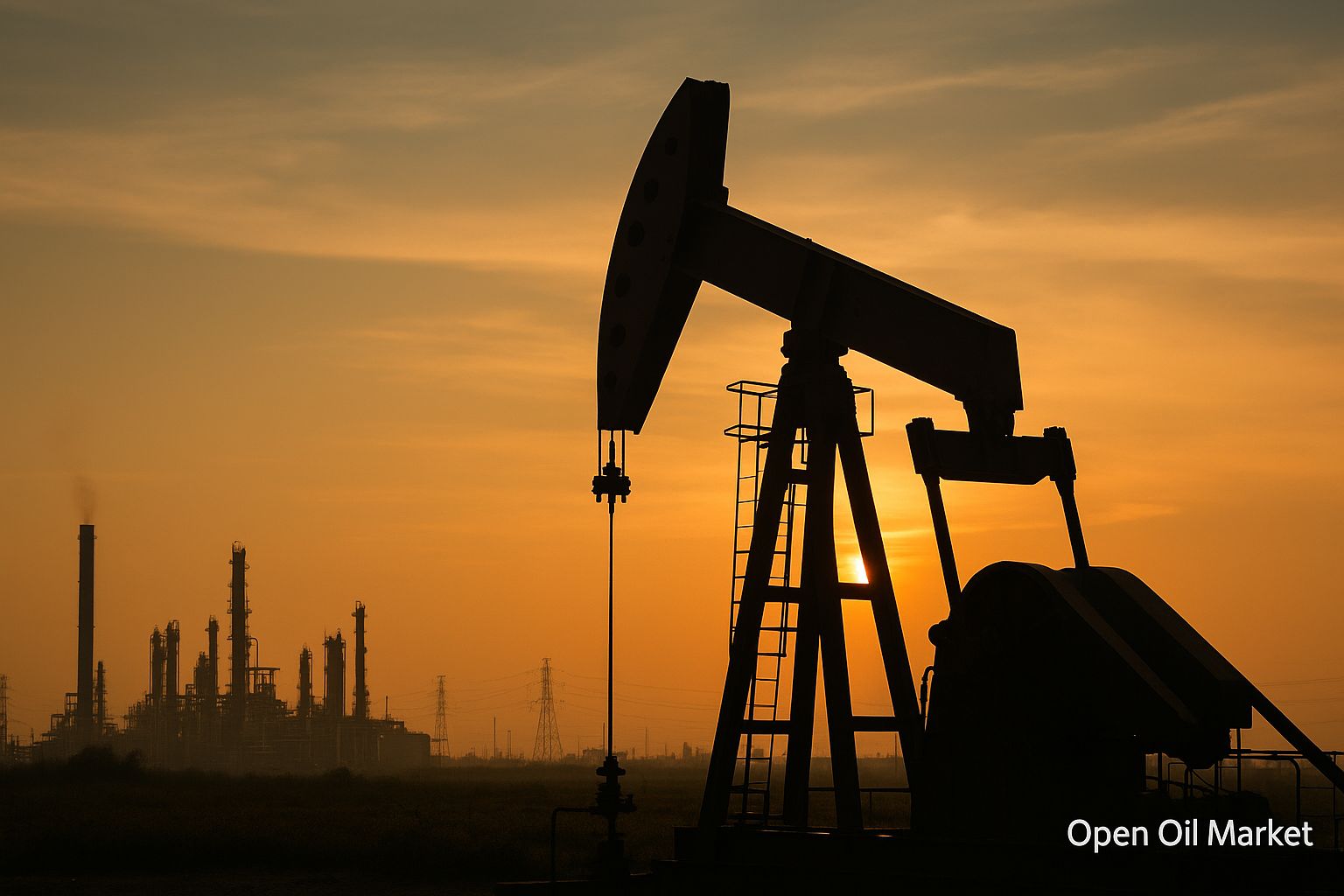
Energy Sector News – Saturday, September 20, 2025: Increased Sanction Pressure, Stable Oil and Gas Prices, Energy Strategies of China and India, Continued Measures to Stabilize Fuel Markets, Renewable Energy Records, High Coal Demand
Current events in the fuel and energy complex as of September 20, 2025, reflect both a relative stabilization of commodity markets and ongoing geopolitical pressures. Western nations are intensifying sanctions against the Russian energy sector, showing no signs of easing restrictions. Meanwhile, the global oil market remains relatively calm, with excess supply and moderate demand keeping Brent crude prices around the upper limit of $60 per barrel. Europe’s gas market is well-prepared for autumn, with underground gas storage almost completely filled (over 95%), ensuring a high level of energy security and restraining price growth. At the same time, the largest Asian economies—China and India—continue to actively increase purchases of oil, gas, and coal, defending their energy security strategies in the face of external pressure. The global transition to clean energy is accelerating, with many regions recording new highs in renewable energy generation, although countries are not yet abandoning traditional resources for the reliability of their energy systems. In Russia, following a recent spike in fuel prices, authorities are maintaining and extending measures to stabilize the domestic market—ranging from adjustments to the damping mechanism to the extension of temporary export restrictions. Below is an overview of key news and trends in the oil, gas, energy, and commodity sectors as of this date.
Oil Market: Excess Supply and Moderate Demand Keep Prices Stable
Global oil prices are showing restrained dynamics as the week comes to a close. The benchmark Brent blend hovers around $66–68 per barrel, while American WTI is in the range of $62–64—about 10% below levels from a year ago. The market has retreated from the peaks of the energy crisis of 2022–2023 and is being influenced by several fundamental factors:
- OPEC+ Production. The oil alliance is gradually increasing supply, systematically lifting production restrictions. From April to October 2025, total production quotas increased by approximately 2.5 million barrels per day—of which +548,000 b/d in August and an additional +137,000 b/d from October. These steps are saturating the oil market.
- Demand. Global oil consumption is growing much more slowly than in previous years. According to the International Energy Agency (IEA), the demand increase in 2025 will be less than 1 million barrels per day (compared to over 2.5 million in 2023). OPEC’s forecast is close—around +1.2 million b/d. The reasons include a slowdown in the global economy (particularly in China), the effect of high prices from previous years that encouraged energy conservation, and high inflation along with strict monetary policies in several countries, all of which limit demand.
As a result, the oil market is experiencing a moderate surplus, with prices remaining significantly below last year's highs. Some analysts believe that if current trends persist, the average Brent price in 2026 could drop to $55 per barrel. However, risks of unforeseen disruptions persist—such as a potential escalation of conflicts in the Middle East, which could sharply disturb the balance between demand and supply.
Gas Market: Full Storage in Europe Ensures Price Stability
The gas market is particularly focused on Europe, which is confidently preparing for winter. By mid-September, European countries have injected record volumes of fuel into their underground gas storage, exceeding 95% capacity, ensuring a high level of energy security for the coming months. This has kept wholesale gas prices in the EU at moderate levels, incomparable to the records of 2022. Nevertheless, experts warn that the situation could change in the event of an extremely cold winter or unexpected disruptions in LNG supplies. Europe remains significantly dependent on fuel imports: domestic gas production in the EU is declining, and traditional pipeline supplies from Russia are minimized, leading the region to rely on a stable influx of LNG from alternative sources.
International Politics: Sanction Pressure Without Easing
The geopolitical situation surrounding the energy sector remains tense. Despite some signals for dialogue in the summer, no significant breakthroughs have occurred between Russia and the West—the sanctions standoff continues. The European Union has prepared a new, 19th package of sanctions against Russia, including additional restrictions in the energy sector. The sanctions target dozens of vessels transporting Russian oil and propose to phase out Russian LNG by 2027 to close remaining loopholes. Western restrictions continue to stifle investments and technology exchanges in the Russian energy sector, intensifying Moscow’s strategic pivot eastward.
Asia: India and China Strengthen Energy Security
Asian giants—India and China—continue to play a key role in the global energy market, compensating for the decline in demand in the West. Both countries are actively sourcing Russian hydrocarbons based on economic benefits and strategic interests. India has indicated that it does not intend to sharply reduce hydrocarbon imports from Russia despite Western pressure; currently, Russia meets a significant portion of India's fuel needs, helping to keep domestic fuel prices in check. Simultaneously, New Delhi is investing in the exploration of new fields and the development of its own production, although in the coming years, about 80% of oil and 40% of gas will still be sourced from abroad. China, for its part, has not joined the sanctions against Russia and has increased purchases of Russian oil and gas under preferential terms. Although China has achieved record levels of domestic production (with a +1.5% increase in oil and +5% in gas production in the first eight months of 2025 compared to the previous year), domestic resources cover only part of its consumption. Therefore, Beijing continues to import about 70% of its required oil and 40% of gas, strengthening energy cooperation with Moscow (gas supplies via the ‘Power of Siberia’ pipeline have already increased, and the ‘Power of Siberia - 2’ project has been agreed upon). Both countries demonstrate a willingness to secure energy resources for their economies on their own terms, even if this goes against external pressure. Their activity remains a key factor in the growth of global demand for hydrocarbons and the redistribution of oil, gas, and coal trade flows.
Energy Transition: Records in Renewable Energy and Role of Traditional Resources
The global transition to clean energy is entering a new phase in 2025. Many regions worldwide are setting record highs in capacity additions and electricity generation from renewable sources—primarily solar and wind. In the European Union, total generation from solar and wind farms surpassed output from coal and gas power plants for the first time in 2024, and in 2025, the share of green electricity continues to grow (in some months exceeding 50% of consumption). China is adding tens of gigawatts of new solar and wind plants annually, continuously updating its own records in green generation.
Investments in low-carbon energy continue to rise. According to the IEA, total investments in the global energy sector will exceed $3 trillion in 2025, more than half of which will be allocated to renewable energy projects, grid modernization, and energy storage systems. Oil and gas-rich countries in the Persian Gulf are also launching large solar and wind projects in anticipation of a gradual decrease in global demand for fossil fuels. Major global oil and gas companies are diversifying their businesses, developing hydrogen and biofuel production, and implementing carbon capture and storage (CCS) technologies in response to societal and investor demands for economic decarbonization.
At the same time, the rapid growth in the share of renewables presents new challenges for energy systems. As the solar and wind sectors expand, the variability of generation increases—reserve capacities are needed during calm days and nighttime. Many countries still rely on traditional sources (gas, coal, nuclear power plants) to ensure stable energy supply during peak hours. Projects are underway to develop energy storage systems and smart grids to improve flexibility in energy supply. Experts forecast that by 2026–2027, total generation from renewable sources may surpass coal, ranking first worldwide. However, at this stage, renewable energy still relies on traditional resources, which remain a guarantee of energy supply stability during peak loads and price shocks in the gas market.
Coal: High Asian Demand Amid Market Balance
Despite climate agendas, the global coal market in 2025 is operating near record levels. Global coal consumption remains comparable to the highs of 2022–2023, primarily driven by high demand in Asia. China remains the largest producer and consumer of coal: over 4 billion tons are produced annually, which is almost entirely consumed by Chinese power plants. During peak demand periods (e.g., summer during extreme heat), even this volume is insufficient, necessitating an increase in imports to avoid electricity shortages. India generates about 70% of its electricity from coal-fired power plants, and absolute coal consumption continues to grow alongside economic development. Other developing countries in Asia are also introducing new coal plants to meet the growing demand for electricity.
Major exporters—Indonesia, Australia, Russia, South Africa, and others—have increased production and supplies in recent years, taking advantage of favorable market conditions. After price surges in 2021–2022, global prices for thermal coal have stabilized at moderate levels: significantly below peaks, yet still above the average decade level. This price range remains beneficial for mining companies while being acceptable for consumers.
Many countries declare goals for phased reductions in coal utilization; however, in the short term, this resource remains indispensable for reliable energy supply to hundreds of millions of people. Even in Europe, where decarbonization is a priority, authorities must keep some coal plants on standby—certain countries maintain coal-fired plants in case of gas shortages or insufficient wind and sunlight. The global coal sector is in relative equilibrium: demand is consistently high due to Asia, supply is sufficient, and prices are predictable. In the long term, the share of coal in the energy balance will gradually decrease as climate policies tighten; however, in the coming years, coal will continue to play an important role as a guarantor of energy security during peak load periods and price shocks in the gas market.
Russian Fuel Market: Extension of Measures and Pricing Discussion
At the end of summer and early autumn, the internal fuel market in Russia faced a crisis triggered by a sharp spike in oil product prices. In August, exchange prices for gasoline and diesel reached historic highs, which quickly reflected in fuel costs for consumers. By mid-September, the price of Ai-95 gasoline on the St. Petersburg exchange soared to 73,000 rubles per ton (above the August peak), and diesel also saw significant price increases. This price surge was caused by several factors: peak summer demand (mass travel and harvest campaigns) amid low stocks at independent gas stations; repairs and emergency shutdowns at several refineries (including a drone attack on September 14 on the Kirishi refinery, taking 40% of its capacity offline); and the profitability of exports amidst a breakdown of the damping mechanism (due to extremely high prices, payouts under the "damping" mechanism were zeroed, making it more profitable for companies to sell fuel abroad).
The government quickly took steps to stabilize the situation. Since the end of August, a ban on gasoline and diesel exports has been introduced: large oil companies are mandated to refrain from exporting fuel (at least until September 30), while restrictions for independent traders have been extended until October 31, 2025. Refineries have been instructed to increase supplies to the domestic market and direct additional volumes to regions facing shortages. Simultaneously, authorities adjusted the "damping" mechanism—increased thresholds for compensatory payments to oil companies so that subsidies remain available even with rising domestic prices. These measures reduce the incentive to redirect fuel abroad and retain larger volumes of fuel in the domestic market.
Concurrently, the industry-specific Russian Fuel Union (RFS) proposed revisiting the approach to regulating prices at gas stations. The RFS believes that the unspoken rule of limiting price growth to the inflation level has become outdated, as the expenses of the oil industry are rising faster than consumer prices. The association has sent a proposal to the government to unlink fuel prices from CPI and to align them with a special "cost index" (considering taxes, tariffs, salaries, and other factors). The government has taken this initiative under consideration: relevant agencies are due to present their opinions by September 25. The Ministry of Energy reported that they continue working on ensuring stable fuel supplies and controlling prices, taking all necessary measures for uninterrupted supplies of gasoline and diesel to regions.
“For many years, there has been an unspoken rule in the country: the rates of retail price growth for gasoline and diesel should not exceed overall consumer inflation rates. If this rule is violated, regulators restrict exports. However, this year's situation has become complicated due to attacks on refineries that have reduced fuel production, and now price growth has once again outpaced inflation amid the risk of shortages. Thus, voices within the industry are emerging, calling (and not without justification) for a new benchmark, as old measures cannot be applied in emergency situations,” noted Sergey Tereshkin in a comment to Forbes.
The initiative to abandon the “inflationary” limitation was immediately criticized. Politicians labeled it an attempt to shift industry costs onto consumers and accelerate inflation. Experts also warn that accelerated growth in gasoline prices will adversely affect transportation and the agricultural sector—transporters will be forced to raise tariffs, prompting a shift of cargoes to rail. Nevertheless, most analysts doubt that authorities will take such a step, expecting that price ties to inflation will be maintained to avoid a widespread wave of price increases.
By the end of September, the measures taken began to yield results. Following the price peaks in August, wholesale fuel prices decreased by about 7–8%. However, pressures resumed in the second decade of September: exchange quotes for gasoline and diesel prices began to rise again due to still high demand and limited supply (some refineries are still coming back from maintenance, and the export ban has not fully eliminated the shortage). Retail fuel prices have risen more than 6% since the beginning of the year—significantly above inflation (~4% during the same period). Nonetheless, authorities claim that the situation is under control: filling stations are adequately supplied with gasoline and diesel, and new batches from refineries are arriving regularly. As the harvest campaign concludes and refineries return to normal operations, the growth in filling station prices is expected to slow down. The government emphasizes that oil product exports will resume only after complete stabilization of the market and a sustainable decline in wholesale prices. If necessary, restrictions will be extended, and additional resources will be mobilized to keep fuel costs for consumers within acceptable limits and prevent shortages of gasoline and diesel in the autumn of 2025.




